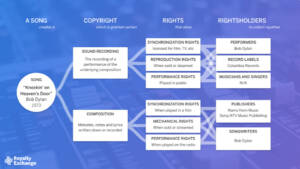The Art of Music Collaboration: Tips and Tricks

Introduction
Definition of music collaboration
Music collaboration refers to the process of two or more musicians coming together to create and produce music. It involves the sharing of ideas, skills, and resources to achieve a common goal. Collaboration in music can take various forms, such as songwriting partnerships, band collaborations, or producer-artist collaborations. It is a dynamic and creative process that allows artists to combine their unique talents and perspectives, resulting in the creation of innovative and compelling music. Music collaboration not only enhances the quality of the final product but also provides opportunities for growth, learning, and networking within the music industry.
Importance of music collaboration
Music collaboration plays a crucial role in the creation and development of music. It allows artists to combine their unique talents, skills, and perspectives to produce something greater than what they could achieve individually. By working together, musicians can explore new ideas, experiment with different styles and genres, and push the boundaries of creativity. Collaboration also fosters a sense of community and camaraderie among artists, as they share their passion for music and support each other’s artistic growth. Ultimately, music collaboration not only enhances the quality of the final product but also enriches the overall music-making experience.
Overview of the article
In this article, we will explore the art of music collaboration and provide valuable tips and tricks for musicians looking to collaborate effectively. Music collaboration is a powerful way for artists to combine their unique talents and create something truly special. Whether you are a solo artist looking to collaborate with other musicians or a band seeking to work with producers or songwriters, this article will provide insights into the benefits of collaboration, the challenges that may arise, and practical strategies for successful collaborations. By the end of this article, you will have a deeper understanding of the art of music collaboration and be equipped with the knowledge to embark on your own collaborative projects.
Finding the Right Collaborators
Identifying your musical style and genre
Identifying your musical style and genre is an essential step in the art of music collaboration. It helps you find like-minded musicians who share your musical vision and can contribute to your creative process. Understanding your musical style and genre also allows you to explore different sounds and experiment with various elements to create a unique and captivating musical experience. Whether you are a solo artist or part of a band, knowing your musical style and genre provides a solid foundation for effective collaboration and ensures that your artistic expression is cohesive and authentic.
Networking within the music industry
Networking within the music industry is crucial for musicians and artists looking to collaborate and expand their careers. Building a strong network allows individuals to connect with like-minded professionals, share ideas, and discover new opportunities. Attending industry events, such as music conferences and workshops, can provide valuable networking opportunities, as well as joining online communities and social media groups dedicated to music collaboration. By actively engaging with others in the industry, musicians can form meaningful relationships, gain exposure to different perspectives, and potentially find new collaborators or mentors. Networking within the music industry is not only about making connections, but also about fostering a supportive community that can help artists thrive and succeed in their creative endeavors.
Utilizing online platforms for collaboration
Utilizing online platforms for collaboration has become increasingly popular in the music industry. With the advancements in technology, musicians now have the ability to connect and work together regardless of their geographical location. Online platforms provide a convenient and efficient way for artists to share ideas, exchange files, and collaborate on projects in real-time. Whether it’s through video conferencing, file sharing platforms, or virtual studios, musicians can now collaborate seamlessly and effortlessly. This has opened up a world of opportunities for artists to collaborate with others from different backgrounds and genres, resulting in unique and innovative musical creations. The use of online platforms for collaboration has not only expanded the creative possibilities for musicians but has also fostered a sense of community and connection within the industry. It has truly revolutionized the way musicians collaborate and has made the art of music collaboration more accessible and inclusive than ever before.
Effective Communication
Establishing clear goals and expectations
Establishing clear goals and expectations is crucial in any music collaboration. It lays the foundation for a successful partnership and ensures that everyone involved is on the same page. By clearly defining what you hope to achieve and what each person’s role and responsibilities are, you can avoid misunderstandings and conflicts down the line. Additionally, setting clear expectations helps to keep the project focused and on track, allowing for efficient and effective collaboration. Whether it’s outlining the desired outcome, establishing deadlines, or discussing communication methods, taking the time to establish clear goals and expectations is essential for a smooth and productive music collaboration.
Active listening and constructive feedback
Active listening and constructive feedback are essential components of successful music collaboration. When working with other musicians, it is important to truly listen to their ideas and contributions, taking the time to understand and appreciate their perspective. This not only fosters a sense of respect and collaboration, but also allows for the creation of a more cohesive and harmonious final product. Additionally, providing constructive feedback in a thoughtful and supportive manner can greatly enhance the collaborative process. By offering suggestions and insights that help improve the overall quality of the music, musicians can work together to create something truly remarkable.
Utilizing technology for remote collaboration
Utilizing technology for remote collaboration has become increasingly important in the world of music. With advancements in communication tools and software, musicians can now collaborate with others from different locations, breaking down geographical barriers. This has opened up new opportunities for artists to work together, share ideas, and create music without the need for physical proximity. Whether it’s through video calls, file sharing platforms, or virtual instruments, technology has revolutionized the way musicians collaborate, making it easier and more convenient than ever before.
Creative Collaboration Techniques
Brainstorming and idea generation
Brainstorming and idea generation are essential steps in the process of music collaboration. This is where artists come together to share their thoughts, ideas, and inspirations, and collectively explore different possibilities for their music. During brainstorming sessions, musicians can bounce ideas off each other, experiment with different melodies and harmonies, and push the boundaries of their creativity. It is a time for open-mindedness, collaboration, and the freedom to explore new musical territories. By engaging in brainstorming and idea generation, musicians can unlock their full potential and create music that is truly unique and innovative.
Collaborative songwriting techniques
Collaborative songwriting techniques are essential for musicians looking to create music together. By combining their unique skills, ideas, and perspectives, artists can produce songs that are greater than the sum of their parts. One effective technique is brainstorming, where collaborators come together to generate ideas and explore different musical directions. Another approach is co-writing, where songwriters work together to craft lyrics and melodies, drawing inspiration from each other’s creativity. Additionally, using technology platforms and tools can facilitate remote collaboration, allowing musicians from different locations to work together seamlessly. Overall, collaborative songwriting techniques foster creativity, innovation, and the ability to create music that resonates with a wider audience.
Exploring different musical roles and contributions
In the world of music collaboration, exploring different musical roles and contributions is essential for creating a harmonious and dynamic piece of art. Each musician brings their unique skills, expertise, and perspective to the table, enriching the overall sound and creativity of the project. From the lead vocalist who sets the tone and emotion of the song to the skilled instrumentalists who add depth and texture, every role is crucial in shaping the final product. Collaboration allows musicians to combine their strengths, experiment with new ideas, and push the boundaries of what is possible. By embracing different musical roles and contributions, artists can create music that resonates with audiences and stands the test of time.
Overcoming Challenges
Managing creative differences
Managing creative differences is an essential aspect of music collaboration. When multiple artists come together to create music, it is inevitable that there will be differing opinions and ideas. However, instead of viewing these differences as obstacles, they can be seen as opportunities for growth and innovation. By effectively managing creative differences, artists can harness the power of diverse perspectives and create music that is truly unique and groundbreaking. This requires open communication, active listening, and a willingness to compromise. It is important to create a safe and respectful environment where all artists feel comfortable expressing their ideas and concerns. Through constructive dialogue and collaboration, creative differences can be navigated successfully, leading to the creation of music that exceeds expectations.
Resolving conflicts and finding compromises
Resolving conflicts and finding compromises are essential skills in the art of music collaboration. When multiple creative minds come together, disagreements are bound to arise. However, it is important to approach conflicts with an open mind and a willingness to find common ground. Effective communication and active listening are key in resolving conflicts and ensuring that all voices are heard. By finding compromises, musicians can maintain a harmonious working relationship and create music that reflects the collective vision and creativity of the entire team.
Dealing with logistical and scheduling issues
When it comes to music collaboration, dealing with logistical and scheduling issues can be a major challenge. Coordinating the availability of multiple artists, finding a suitable location for recording, and aligning everyone’s creative vision can often be a complex task. However, there are several tips and tricks that can help streamline the process. First and foremost, open and clear communication is key. Establishing a shared calendar or using scheduling tools can help keep everyone on the same page. Additionally, setting realistic deadlines and being flexible with timing can help accommodate everyone’s schedules. It’s also important to have a backup plan in case of any last-minute changes or conflicts. By addressing logistical and scheduling issues head-on and implementing effective strategies, music collaborators can ensure a smoother and more productive creative process.
Successful Music Collaboration Examples
Case studies of successful collaborations
In the world of music, collaboration has proven to be a powerful tool for creating innovative and groundbreaking works. Through the combination of different talents, ideas, and perspectives, artists have been able to push the boundaries of their craft and create music that resonates with audiences on a deeper level. In this section, we will explore some case studies of successful collaborations that have not only produced incredible music but also paved the way for new and exciting possibilities in the industry.
Lessons learned from renowned collaborations
Collaborating with other musicians can be a transformative experience, leading to the creation of truly remarkable music. Throughout history, there have been numerous renowned collaborations that have taught us valuable lessons. One important lesson is the power of diversity in collaboration. When artists from different backgrounds and genres come together, they bring unique perspectives and skills, resulting in a fusion of ideas and styles that can push the boundaries of creativity. Another lesson is the importance of communication and mutual respect. Successful collaborations require open and honest communication, as well as a deep respect for each other’s artistic vision. By learning from these lessons, musicians can enhance their own collaborative efforts and create music that resonates with audiences on a deeper level.
Analyzing the dynamics of successful collaborations
Analyzing the dynamics of successful collaborations is crucial in understanding the art of music collaboration. It involves examining the various factors that contribute to the success of a collaborative effort, such as effective communication, shared vision, and mutual respect. By studying these dynamics, musicians can gain insights into how to navigate the complexities of working together and create harmonious and impactful music. Additionally, analyzing successful collaborations can also inspire and motivate aspiring musicians to seek out partnerships that can elevate their own creative endeavors. Overall, understanding the dynamics of successful collaborations is essential for musicians who want to thrive in the world of music collaboration.








